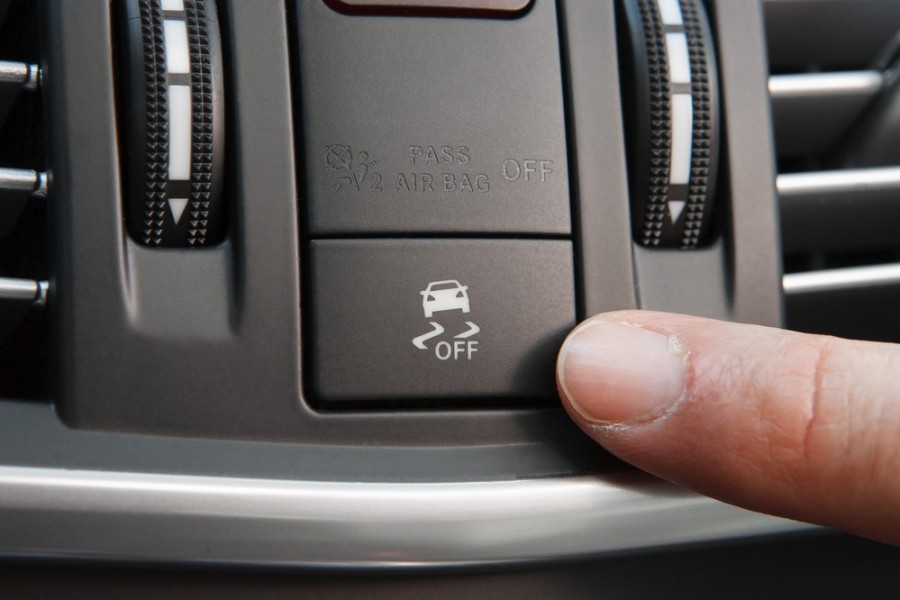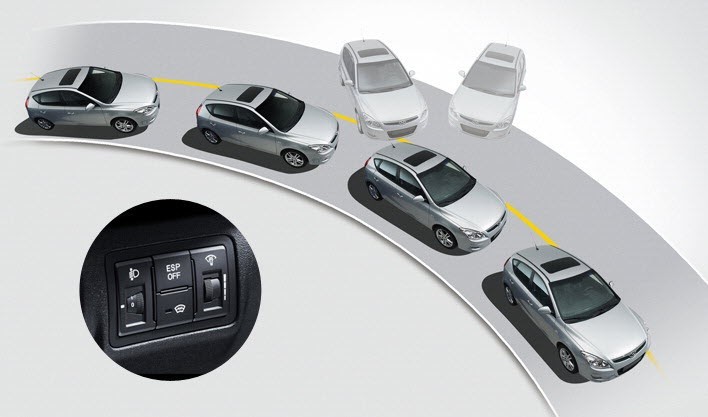What is Electronic Stability Control?

Losing control of your vehicle is a scary feeling. Maybe you’ve recently been in an accident, or experienced a situation where you’re driving in bad weather and your car begins to skid. Many drivers are familiar with traction control and anti-lock brakes, but there’s another technology that some believe is one of the most important advancements in automobile safety—Electronic Stability Control (ESC).
Knowing your car is important, and we always tell our customers at Garber Collision exactly that when they bring in their vehicles from Rochester and all over NY. So, here is a brief description of exactly what an Electronic Stability Control is and how it works.
ESC uses sensors to detect when your vehicle is in danger of skidding or rolling over. If the computerized technology detects a loss of steering control, the brakes are automatically applied to the individual wheels to correct oversteer and understeer. The engine power is often reduced in some systems until the driver regains control during a critical situation. Most times, ESC begins to work before the driver even knows there is a problem.
 The technology dates back to 1983 when the Toyota Crown vehicle utilized four-wheel anti-skid control. In 1987, traction control systems were introduced by Toyota, BMW and Mercedes-Benz, although they did not help with steering. After further development, these three car manufacturers introduced ECS systems in the mid-1990s.
The technology dates back to 1983 when the Toyota Crown vehicle utilized four-wheel anti-skid control. In 1987, traction control systems were introduced by Toyota, BMW and Mercedes-Benz, although they did not help with steering. After further development, these three car manufacturers introduced ECS systems in the mid-1990s.
Once used in high-end luxury vehicles, ESC has been mandatory on all vehicles under 10,000 pounds gross vehicle weight since 2012. Federal Motor Vehicle Safety Standard No. 126 requires ESC systems on passenger cars, multipurpose passenger vehicles, trucks and buses. The rule was instituted to help reduce fatalities and serious injury from rollover crashes.
Over the years, there have been numerous studies confirming the effectiveness of this added safety measure in assisting drivers to maintain control of their vehicles.
NHTSA said that ESC will not only help reduce rollover crashes, but will also decrease single-vehicle crashes of passenger vehicles by approximately 34 percent and single vehicle crashes of sports utility vehicles by 59 percent. According to the national organization, the technology has saved approximately 4,100 lives during 2010-14.
“NHTSA estimates ESC would save 5,300 to 9,600 lives and prevent 156,000 to 238,00 injuries in all types of crashes annually once all light vehicles on the road are equipped with ESC,” according to the NHTSA website.
An analysis by the Highway Loss Data Institute (HLDI) showed that in 2014 nearly half of all registered vehicles included ESC as standard or optional equipment. The organization predicted that the number of vehicles with ESC won’t grow to 95 percent until 2032.
In the meantime, ESC is helping drivers maintain control of their vehicles, reducing crashes and saving lives.
Sources: Wikipedia, Japolik and American Scientific









 The technology dates back to 1983 when the Toyota Crown vehicle utilized four-wheel anti-skid control. In 1987, traction control systems were introduced by Toyota, BMW and Mercedes-Benz, although they did not help with steering. After further development, these three car manufacturers introduced ECS systems in the mid-1990s.
The technology dates back to 1983 when the Toyota Crown vehicle utilized four-wheel anti-skid control. In 1987, traction control systems were introduced by Toyota, BMW and Mercedes-Benz, although they did not help with steering. After further development, these three car manufacturers introduced ECS systems in the mid-1990s.
Social